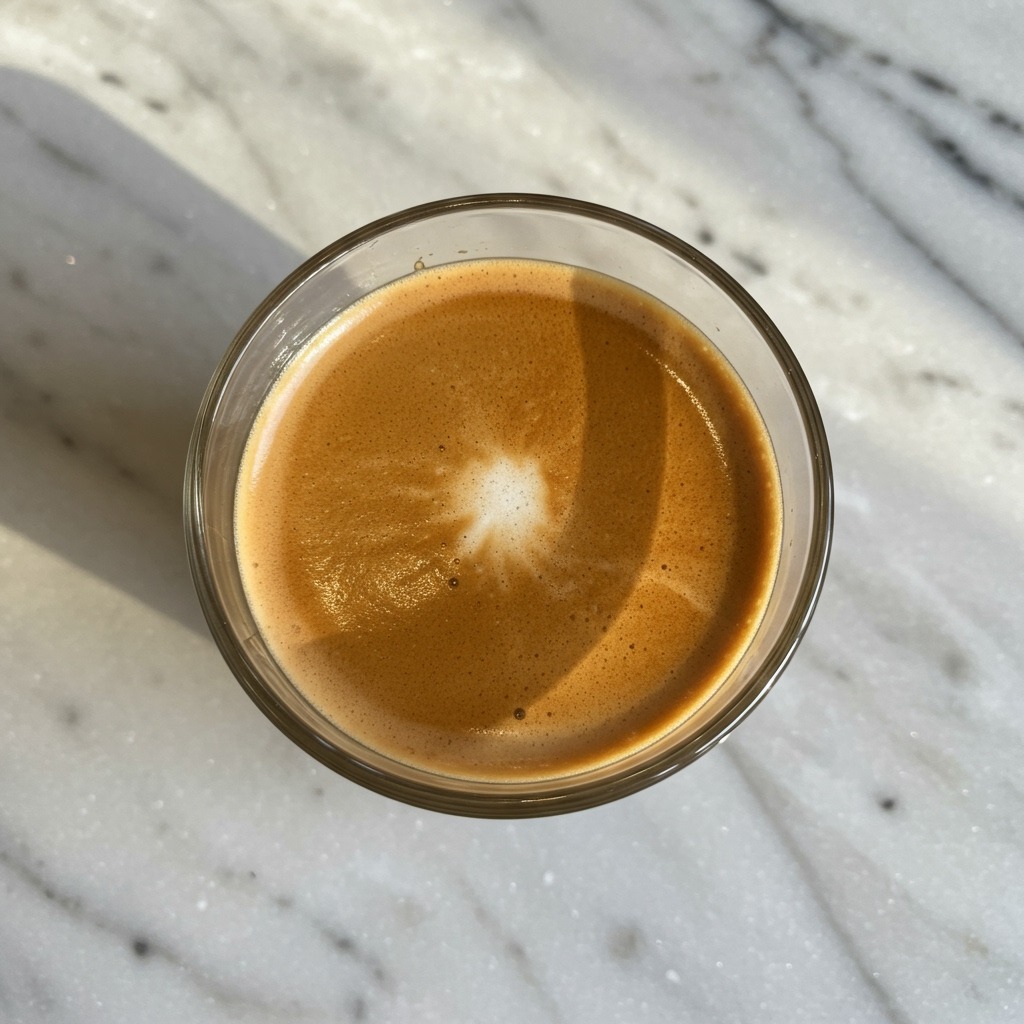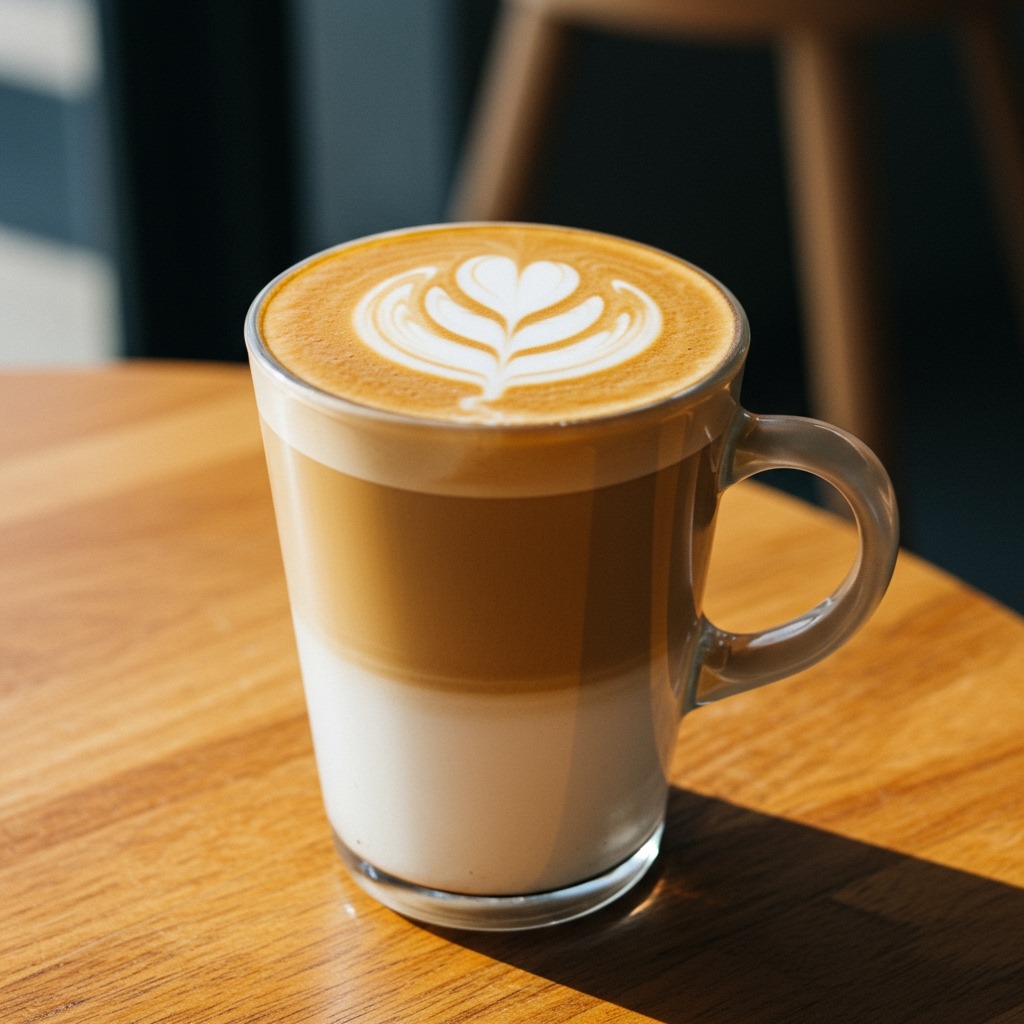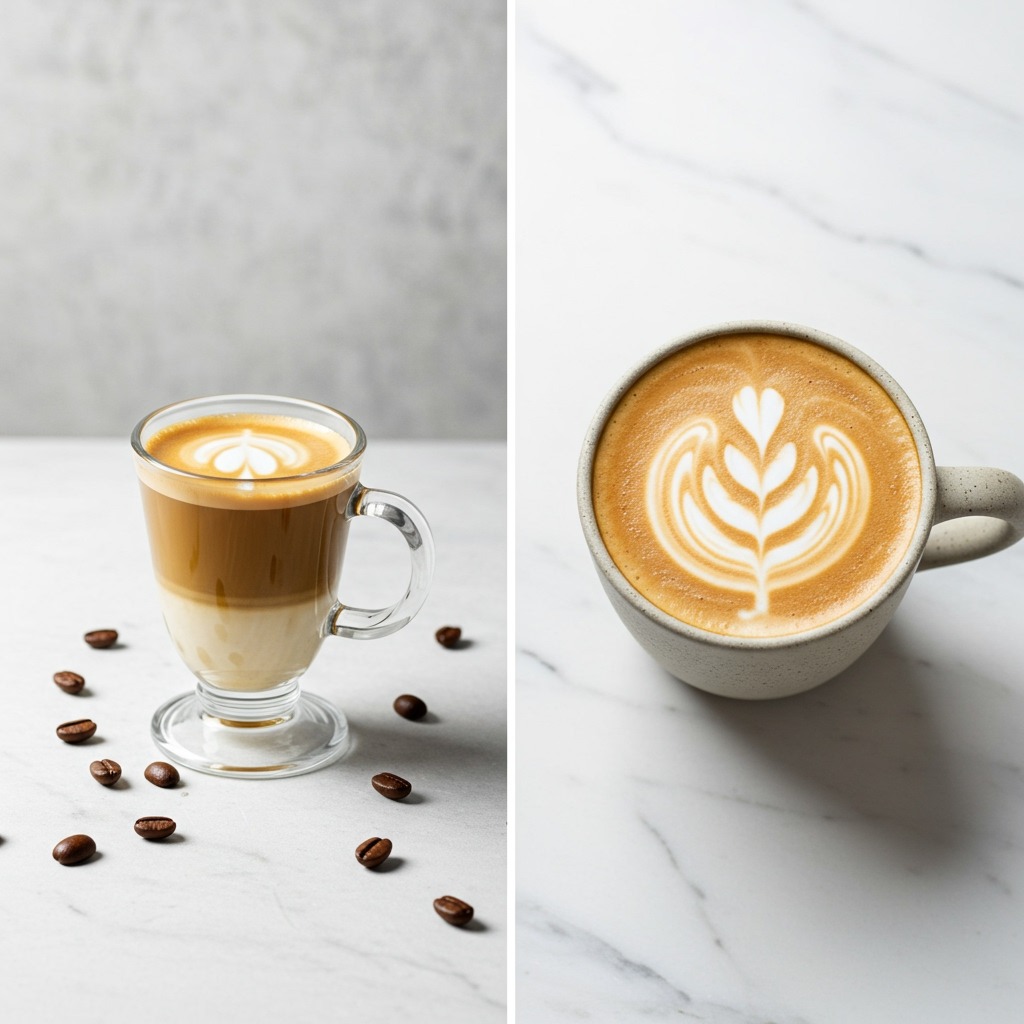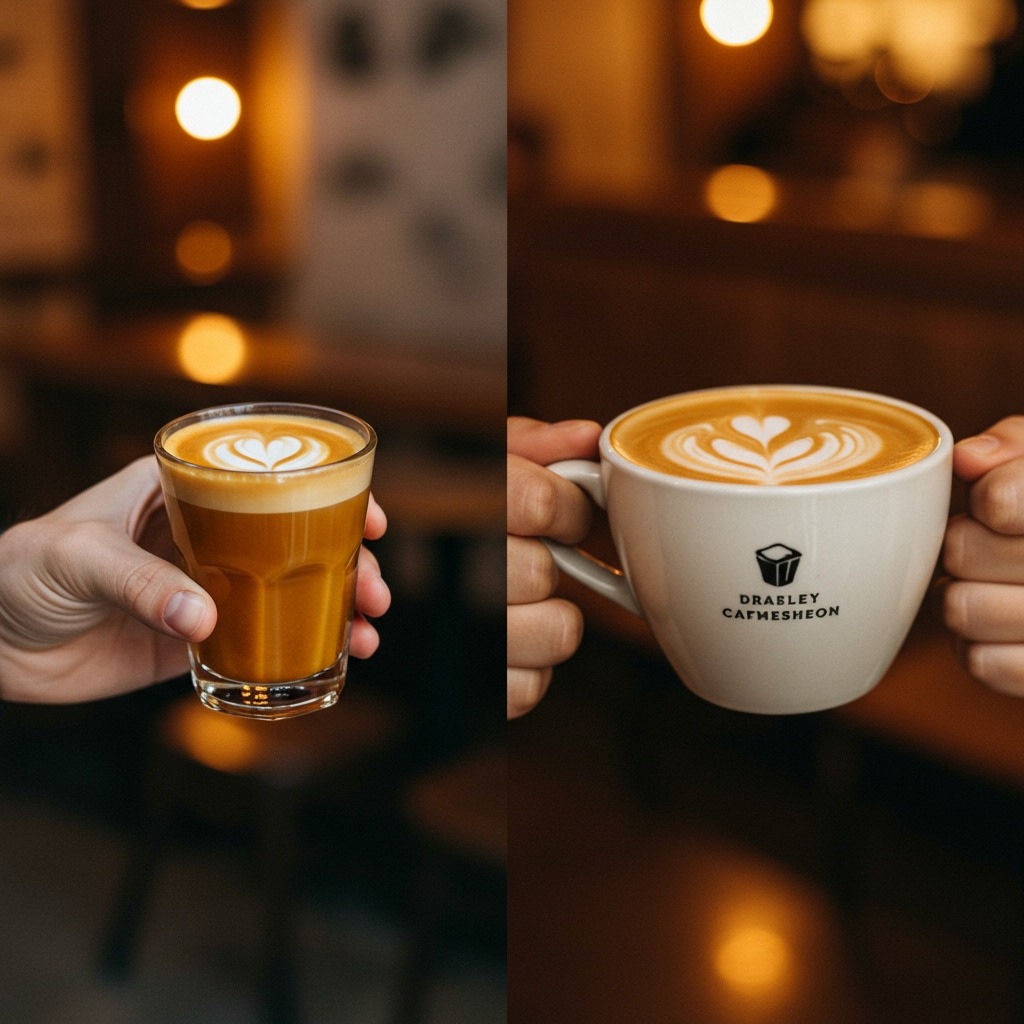You walk into your favorite coffee shop. The aroma of freshly ground beans hits you, the hum of the espresso machine fills the air, and then you see the menu. “Latte? Cortado? What’s the real difference?” You’re not alone. The world of espresso and milk drinks can feel like a maze, with subtle distinctions that drastically alter your coffee experience.
Understanding the unique characteristics of each drink isn’t just about sounding like a coffee connoisseur; it’s about finding your perfect cup. Are you craving a bold, intense coffee hit or a creamy, comforting embrace? The choice between a cortado vs latte dictates your entire beverage journey. I’m here to cut through the froth and steam to demystify these popular choices so you can confidently order the drink that truly satisfies your palate.

Cortado: The Balanced Shot
If you haven’t ventured into the world of cortados yet, you’re missing out on a beautifully balanced coffee experience. It’s a true barista’s favorite for a reason.
A. Origin & Meaning
The name “cortado” comes from the Spanish verb “cortar,” meaning “to cut.” This perfectly describes the drink’s purpose: the small amount of warm milk is meant to “cut” through the acidity and intensity of the espresso, mellowing it slightly without masking its inherent flavor. It’s not about adding sweetness, but about finding harmony. This is a drink with roots in Spain and Portugal, a daily staple for many coffee drinkers.
B. Key Characteristics
The cortado is defined by its precise proportions and unique milk texture.
- Size Matters: Cortados are intentionally small, typically served in a 4 to 5-ounce glass. This compact size ensures the espresso remains the star of the show. If you’re used to large coffee shop drinks, a cortado might seem tiny, but its strength is proportional to its volume. For a deeper dive into this specific drink, explore more about what is a cortado coffee.
- Espresso Ratio: This is the core of the cortado. It’s usually a 1:1 ratio of espresso to milk, or sometimes a slight variation like 1:1.2 (2 ounces of espresso to 2.5 ounces of milk, for example). This near-equal balance ensures the espresso’s character shines through, gently softened by the milk.
- Milk Type & Texture: Here’s where the cortado truly distinguishes itself. The milk is steamed to a velvety microfoam, but crucially, it has very little to no visible foam on top. It’s about integrating the milk into the espresso, creating a smooth, almost homogenous texture throughout the drink. There’s no distinct layer of foam; instead, the milk blends seamlessly, adding body and richness.
- Serving: While you might see it in a small ceramic cup, a classic cortado is often served in a small, handleless glass, sometimes specifically called a “Gibraltar” glass. This has led some cafes to call the drink a “Gibraltar” as well.
C. Taste Profile
The cortado is all about bold balance.
- Espresso-Forward: Expect a much more pronounced coffee flavor than you’d find in a latte. The espresso’s natural sweetness, acidity, and bitterness are present, but tamed.
- Smooth and Balanced: The small amount of milk creates a smooth, velvety mouthfeel without making the drink taste overly milky. It balances the espresso’s intensity, making it approachable.
- Natural Sweetness: Any sweetness you perceive comes from the natural sugars in the milk, caramelized during the steaming process, rather than added syrups. It’s a pure coffee experience, subtly enhanced.
Latte: The Milky Classic

The latte is arguably the most popular espresso drink globally, a comforting and versatile choice for many.
A. Origin & Meaning
“Latte” is short for “caffè latte” in Italian, which simply translates to “coffee milk.” True to its name, it’s a milk-dominant coffee beverage designed to be creamy and mellow. Its origins trace back to Europe, evolving from simple coffee and milk combinations into the elaborate drinks we see today.
B. Key Characteristics
The latte is characterized by its larger size and emphasis on smooth, aerated milk.
- Size: Lattes are significantly larger than cortados, typically ranging from 8 to 12 ounces, and often even larger at mainstream coffee chains. This size allows for a higher milk-to-espresso ratio.
- Espresso Ratio: This is the most defining characteristic of a latte: a much higher proportion of milk to espresso. Ratios typically range from 1:3 to 1:5 or even more. A standard latte often contains a single or double shot of espresso topped with a large volume of steamed milk. For a comprehensive dive, you might find more on what is a latte coffee particularly useful.
- Milk Type & Texture: Latte milk is steamed to create smooth, velvety microfoam with a thin, distinct layer of foam on top. This texture is what allows baristas to pour intricate latte art designs – the hearts, rosettas, and tulips that delight coffee drinkers worldwide. The milk should be sweet and creamy, never bubbly or airy like a cappuccino.
- Serving: Lattes are typically served in larger ceramic mugs or tall glass tumblers, accommodating their generous volume.
C. Taste Profile
A latte offers a milder, more approachable coffee experience.
- Milk-Forward: The flavor of the espresso is significantly subdued by the large volume of milk. You’ll taste the creamy, sweet milk more prominently than the coffee itself.
- Creamy and Smooth: The texture is consistently creamy and smooth, offering a comforting and easy-drinking experience.
- Versatility: Lattes are a popular base for adding flavorings like vanilla, caramel, or pumpkin spice, as the milk provides a neutral canvas for these additions.
Cortado vs Latte: The Head-to-Head Comparison

Let’s break down the key differences between these two beloved espresso and milk beverages side-by-side.
| Feature | Cortado | Latte |
| Origin | Spanish | Italian |
| Primary Goal | “Cut” espresso acidity; balance intensity | Provide a milky, comforting coffee experience |
| Espresso Ratio | 1:1 or 1:1.2 (Espresso to Milk) | 1:3 to 1:5+ (Espresso to Milk) |
| Size/Volume | Small (4-5 oz) | Large (8-12 oz or more) |
| Milk Texture | Velvety microfoam, minimal to no visible foam, integrated | Velvety microfoam with thin layer of distinct foam (for art) |
| Coffee Flavor | Pronounced, bold, espresso-forward | Milder, milk-forward, creamy |
| Sweetness | From milk’s natural sugars | From milk’s natural sugars; often added syrups |
| Serving Vessel | Small glass (e.g., Gibraltar) or ceramic cup | Large ceramic mug or tall glass |
F. Calories & Nutrition
When considering the health aspect, the difference in size and milk volume is significant.
- Cortado: Because it contains far less milk, a cortado naturally has fewer calories, less fat, and less sugar than a latte, assuming no added sweeteners. It’s a more concentrated drink.
- Latte: The larger volume of milk means a higher calorie, fat, and sugar content, especially if you opt for whole milk or add flavored syrups. If you’re mindful of your intake, a cortado can be a lighter option without sacrificing coffee flavor. For a detailed breakdown of coffee nutrition, you might look into how many calories in a cup of coffee in general.
Which One Should You Choose? Your Perfect Pick
Now that you know the facts, which drink is right for you? It’s all about matching the coffee to your mood and palate.
A. Choose a Cortado If:
- You prefer a bolder, more intense espresso flavor. You want to truly taste the coffee, with the milk simply softening its edges.
- You want less milk but still crave some creaminess. It’s the perfect middle ground between a straight espresso shot and a milk-heavy latte.
- You appreciate a smooth, velvety mouthfeel without much foam. The integrated milk texture is a hallmark of a well-made cortado.
- You’re looking for a quick, concentrated coffee experience. It’s a delightful pick-me-up that doesn’t linger.
B. Choose a Latte If:
- You prefer a milder, milkier coffee taste. You enjoy a creamy, comforting beverage where the coffee flavor is subtle.
- You enjoy a larger, more leisurely drink. A latte is designed to be savored over a longer period.
- You love the creamy texture and potential for latte art. There’s a joy in that first sip of perfectly poured microfoam.
- You often add flavorings or sweeteners. The larger milk volume provides a great canvas for syrups without overpowering the coffee.
- You’re easing into espresso drinks. The high milk content makes it very approachable for those new to espresso.

Beyond the Basics: Other Considerations
The perfect coffee experience goes beyond just the type of drink. A few other factors play a big role.
A. Barista Skill
The quality of both a cortado and a latte heavily relies on the barista’s skill, especially when it comes to steaming milk. Properly steamed milk should be velvety and sweet, not overly aerated or burned. A skilled barista can truly elevate your experience.
B. Coffee Beans
The foundation of any great espresso drink is, of course, the coffee itself. The origin, roast level, and freshness of the beans significantly impact the flavor profile of the espresso shot, which then influences the final taste of both the cortado and the latte. The process from how you roast coffee beans to how you grind coffee beans directly affects the quality of your espresso.
C. Milk Choice
While whole milk is traditional for its richness and ability to create stable microfoam, alternative milks (oat, almond, soy) are widely available. Each will impart a different taste and texture to your drink. Oat milk, for example, is known for its creamy texture that mimics dairy well.
FAQ: Your Cortado & Latte Questions Answered
Is a cortado stronger than a latte?
In terms of coffee flavor concentration, yes, a cortado is generally stronger because it has a lower milk-to-espresso ratio. It delivers a more intense coffee taste. A latte, with more milk, dilutes the espresso flavor more.
Can you get latte art on a cortado?
It’s challenging but possible! While a latte’s larger surface area and thicker foam layer are ideal for elaborate latte art, skilled baristas can sometimes create simple designs like hearts or dots on a cortado due to its perfectly integrated microfoam.
What’s the difference between a cortado and a flat white?
The main difference lies in the milk texture and origin. A flat white typically uses velvety microfoam with no visible foam on top, similar to a cortado, but often uses a double shot of espresso in a slightly larger cup (6-8 oz). It’s designed to be a stronger coffee flavor than a latte but smoother than a cappuccino. Cortados are smaller and very precise in their 1:1 or 1:1.2 ratio.
What about a macchiato vs cortado vs latte?
A traditional macchiato (“marked” coffee) is an espresso “marked” with just a dollop of foamed milk. It’s the most espresso-forward of the three, followed by the cortado (more milk, integrated) and then the latte (most milk, creamy). Each offers progressively more milk and less intense coffee flavor.
Are cortados only served in specific glasses?
While the “Gibraltar” glass is iconic for a cortado (leading to the “Gibraltar” drink name in some places), you might also find them served in small ceramic cups. The vessel isn’t as critical as the proportions and milk texture, but the glass helps showcase the distinct layers and integrated milk.
